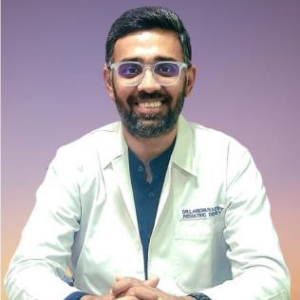Abstract Detail

Mistry Laresh N
Bharati Vidyapeeth University Dental College and Hospital, India
Abstract
Endodontics in primary teeth presents significant challenges, particularly due to the inherent variability in their anatomy and physiological characteristics. One of the most difficult aspects of treating primary teeth is the presence of accessory canals, especially in the furcation areas, which complicates the ability to perform successful radical pulp therapies such as pulpectomy. These variations in the tooth structure can lead to incomplete cleaning or sealing of these accessory canals, which significantly lowers the chances of successful treatment outcomes.
Non-invasive approaches to dental pulp treatment with the use of biomaterials, have demonstrated promising results in managing the pulp without resorting to full removal. However, the application of these materials has been limited to procedures such as indirect and direct pulp treatments and pulpotomy. Typically, the use of biomimetic materials, have shown good success rates when used in procedures that aim to preserve pulp vitality or induce healing. However, the application of such materials in more invasive procedures like pulpectomy remains problematic due to their unresorbing properties. For instance, calcium trisilicate cements, while offering excellent potential for promoting healing, fail to resorb over time in the same way that the primary tooth’s natural tissue would. This lack of resorption can disrupt the natural exfoliation process, leading to complications in treatment outcomes.
This paper discusses the significance of accessory canals in primary teeth and the complexities they introduce, particularly in the furcation area, which often requires specific attention. It also emphasizes the need for more effective treatment strategies to address these challenges. By exploring potential ways to refine current pulpectomy protocols and adapt them to account for the unique characteristics of primary teeth, the paper seeks to improve success rates and ensure better outcomes for pediatric patients undergoing radical endodontic procedures.
Audience Take Away
- Importance of accessory canals in primary molar teeth and their significance to successful treatments.
- Limitations of successful treatment outcomes in conventional pulpectomy procedures.
- Integration of the merits of biomimetic materials and overcoming their traditional limitations of use in pulpectomy procedures.
- Establishment of a new improved treatment protocol in primary molar endodontics with more predictable and sustainable results.
Biography
Dr. Laresh is an experienced clinician in Pediatric and Preventive Dentistry with academic experience of more than 10 years and is inclined to research interests in systematic reviews and clinical topics in pediatric dentistry. He has published numerous indexed scientific papers including systematic reviews and meta-analysis on topics of pediatric dental clinical concerns such as pediatric restorative dentistry and endodontics, and is a staunch advocate of evidence based clinical practice. He has a Fellowship from Orthodontic World Institute, Barcelona, Spain, and has certificate training in Advanced Dental Leadership from United Kingdom, and has advanced research training from Indian Council of Medical Research.
